Figures & data
FIGURE 1 Map of the north shore of Long Island Sound showing the locations of the collection sites, with indications of habitat type. From west to east the sites are as follows: the Mianus River (MR), the Pequonnock River (PR), the Housatonic River (HR), the Quinnipiac River (QR), the Farmington River (FR), Wethersfield Cove (WC), the Eightmile River (EM), Bride Brook (BB), the Shetucket River (SR), and Poquetanuck Brook (PB). The red dots represent dams.
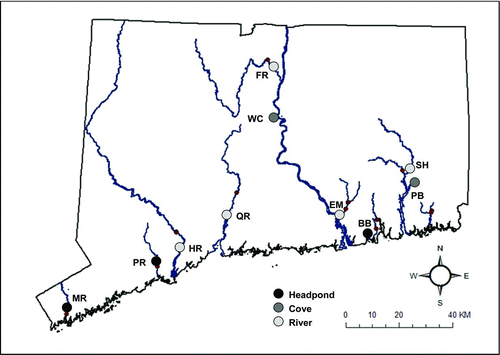
FIGURE 2 Mean (a) water Sr:Ca and (b) water Ba:Ca values at the 10 collection sites in 2008–2009. The error bars represent SEs. Means with the same letter are not significantly different (ANOVA with Tukey's HSD test on log10 transformed values; P < 0.05).
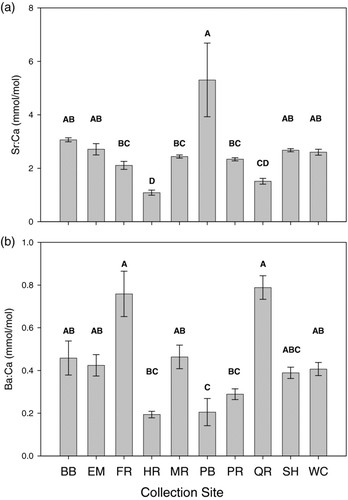
FIGURE 3 Linear regressions of (a) the otolith Sr:Ca values of individual age-0 alewives on the mean Sr:Ca values in the water at the collection sites and (b) the otolith Ba:Ca values of individual age-0 alewives on the mean Ba:Ca values in the water at the collection sites. All element : Ca ratios were based on the freshwater residency period of the fish and were log10 transformed.
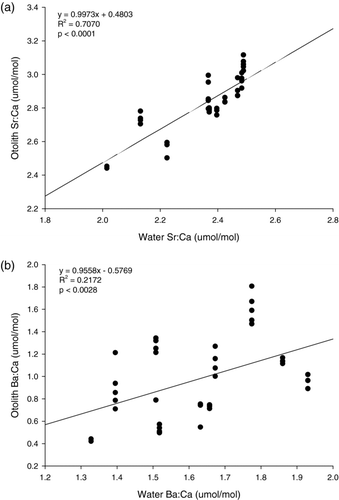
FIGURE 4 Linear regressions of (a) the otolith Sr:Ca values of individual age-0 blueback herring on the mean Sr:Ca values in the water at the collection sites and (b) the otolith Ba:Ca values of individual age-0 blueback herring on the mean Ba:Ca values in the water at the collection sites. See for additional information.
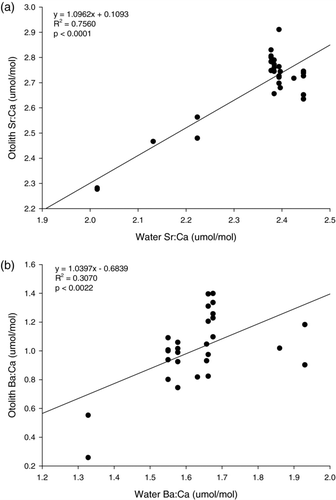
TABLE 1 Results of quadratic discriminant function analysis with the jackknife procedure for age-0 alewives. The number of fish analyzed per site is the total for each row. Classification accuracy back to the site of collection was based on otolith Sr:Ca and Ba:Ca values.
FIGURE 5 Plot of canonical variates 1 and 2 created through a quadratic discriminant function analysis including age-0 alewife Sr:Ca and Ba:Ca values.
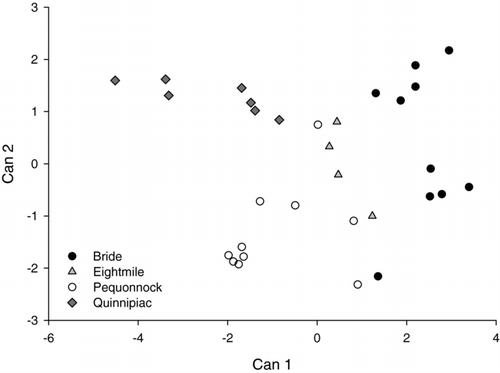
TABLE 2 Results of quadratic discriminant function analysis with the jackknife procedure for adult alewives. Site codes are as follows: BB = Bride Brook, EM = the Eightmile River, HR = the Housatonic River, MR = the Mianus River, PB = Poquetanuck Brook, PR = the Pequonnock River, QR = the Quinnipiac River, and SH = the Shetucket River. See for additional information.
FIGURE 6 Plots of canonical variates 1 and 2 created through quadratic discriminant function analyses including Sr:Ca and Ba:Ca values from (a) adult alewife otoliths and (b) adult blueback herring otoliths. The points represent individuals collected from the indicated sites, and the ovals are 95% confidence ellipses around the group centroids generated from the samples.
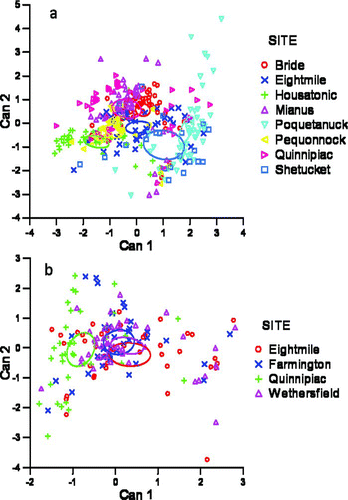
TABLE 3 Results of quadratic discriminant function analysis with the jackknife procedure for adult blueback herring. See for additional information.
FIGURE 7 Representative Sr:Ca and Ba:Ca transects of (a)–(b) adult fish that migrated directly from their natal sites to the ocean, (c)–(d) age-0 fish that migrated indirectly from their natal sites to the ocean, and (e)–(f) adult fish that migrated indirectly. All transects proceed from the core of the otolith toward the edge. Note that the scales vary for both the y- and x-axes; the transects for the age-0 fish are complete, but those for the adults are abbreviated at the point of migration to saltwater. The data were smoothed for presentational clarity.
